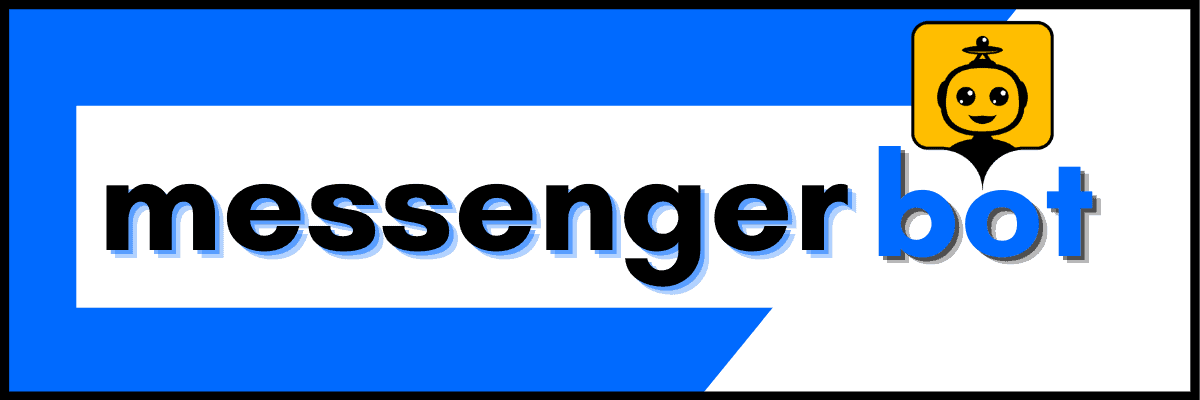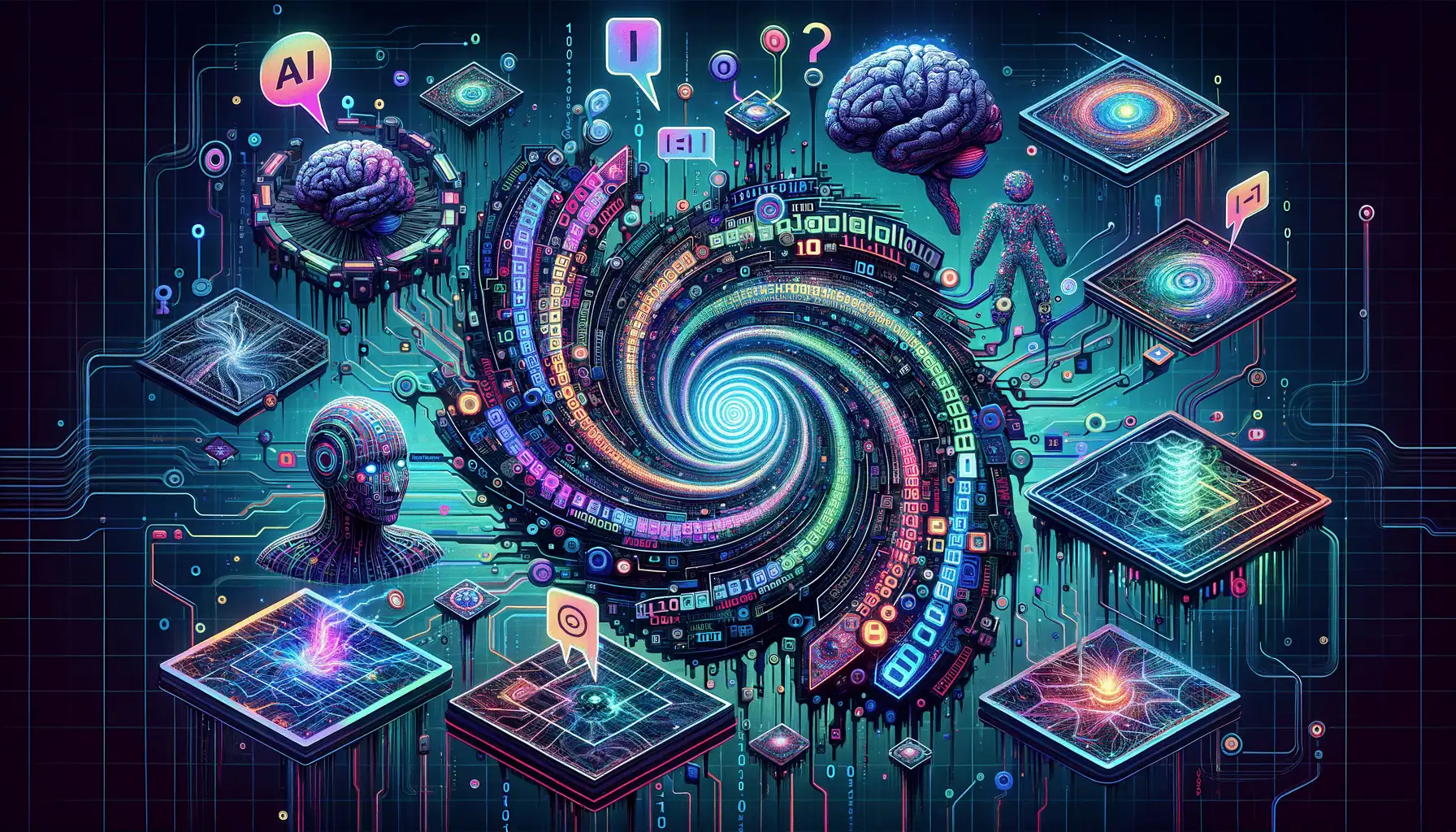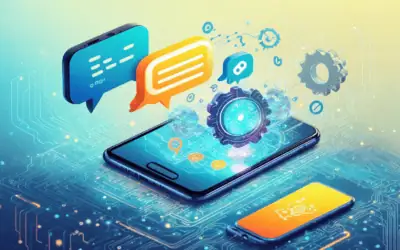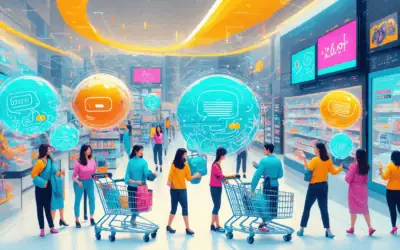In the rapidly evolving landscape of artificial intelligence, chatbot software open source solutions are revolutionizing the way businesses interact with their customers. As companies seek cost-effective and customizable options for implementing conversational AI, open source chatbot frameworks have emerged as powerful tools for creating intelligent, automated conversations. This article explores the top 5 open source chatbot platforms, delving into their features, benefits, and potential applications. From evaluating the best open source AI chatbots to comparing them with proprietary solutions like ChatGPT, we’ll guide you through the world of artificial intelligence chat bot open source technology. Whether you’re a developer looking to harness the power of open source conversational AI or a business owner searching for the ideal chatbot solution, this comprehensive guide will help you navigate the landscape of free AI chatbot options and open source chat models.
Exploring Open Source Chatbot Software
As a leading provider of AI-powered messaging solutions, I’ve witnessed firsthand the transformative impact of open source chatbot software on digital communication. These versatile tools have revolutionized how businesses interact with their customers, offering unprecedented levels of automation and personalization.
Open source chatbots leverage artificial intelligence and machine learning to create dynamic, responsive conversational interfaces. Unlike proprietary solutions, open source platforms provide developers with the flexibility to customize and enhance the software to meet specific business needs. This adaptability, combined with the collective knowledge of a global developer community, has led to rapid advancements in chatbot technology.
What is the best open source AI chatbot?
Determining the “best” open source AI chatbot depends on specific use cases and requirements. However, based on current trends and capabilities, several platforms stand out:
1. Rasa: Known for its highly customizable nature and advanced natural language understanding (NLU) capabilities, Rasa is ideal for complex conversational AI applications. Its machine learning components allow for sophisticated dialogue management.
2. Botpress: This user-friendly platform features a visual flow editor and supports multiple NLU engines, making it excellent for both beginners and advanced developers. Its modular architecture allows for easy expansion of functionalities.
3. Microsoft Bot Framework: As a robust toolkit for building enterprise-grade conversational AI, it integrates seamlessly with Azure services, offering scalability and advanced features like multi-turn dialogues and language understanding.
4. OpenDialog: Focusing on task-oriented dialogues, OpenDialog offers a unique approach to conversation design, making it particularly useful for businesses with specific workflow requirements.
5. Botkit: Now part of Microsoft, Botkit provides a comprehensive toolkit for building chat bots, apps, and custom integrations for major messaging platforms, offering flexibility and ease of use.
While these options excel in various aspects, the choice ultimately depends on your specific needs, technical expertise, and desired features. It’s worth noting that while we at Messenger Bot offer our own proprietary solution, we recognize the value and innovation that open source platforms bring to the AI chatbot landscape.
Benefits of open source chatbot platforms
Open source chatbot platforms offer numerous advantages that make them attractive for businesses and developers alike:
1. Customization: With access to the source code, developers can tailor the chatbot to specific business needs, integrating unique features and functionalities.
2. Cost-effectiveness: Open source solutions often come with no licensing fees, reducing initial investment costs for businesses.
3. Community support: A global community of developers contributes to ongoing improvements, bug fixes, and feature enhancements.
4. Transparency: The open nature of the code allows for thorough security audits and faster identification of potential vulnerabilities.
5. Flexibility: Businesses can choose to self-host or deploy on preferred cloud platforms, maintaining control over data and infrastructure.
6. Integration capabilities: Many open source chatbots offer extensive APIs and plugins, facilitating seamless integration with existing systems and third-party services.
7. Learning opportunities: Developers can study and learn from the code, fostering innovation and skill development within the organization.
8. Scalability: As your business grows, open source platforms can be scaled and adapted to meet increasing demands without being locked into proprietary ecosystems.
These benefits make open source chatbots an attractive option for businesses looking to enhance their customer engagement strategies. At Messenger Bot, we’ve incorporated many of these principles into our own platform, ensuring flexibility and customization while providing the reliability of a managed solution.
By leveraging the power of open source AI chatbots, businesses can create more engaging, personalized, and efficient customer interactions, ultimately driving growth and improving user satisfaction.

Top Free AI Chatbot Solutions
In the rapidly evolving landscape of AI-driven communication, we at Messenger Bot recognize the growing demand for accessible chatbot solutions. While our platform offers advanced features for businesses seeking robust automation, we understand that many users are looking for free options to explore the potential of AI chatbots.
Is there a free AI chatbot?
Absolutely! The market is teeming with free AI chatbot options that cater to various needs and skill levels. Here’s a rundown of some popular free AI chatbots available:
1. ChatGPT: OpenAI’s revolutionary conversational AI has taken the world by storm with its impressive language understanding and generation capabilities.
2. Google Bard: As Google’s answer to ChatGPT, Bard offers a free AI chatbot experience integrated with Google’s vast knowledge base.
3. Bing Chat: Microsoft’s AI-powered chatbot, now integrated into the Bing search engine, provides an interactive search experience at no cost.
4. Claude: Developed by Anthropic, Claude offers free interactions and is known for its strong ethical considerations and factual responses.
5. Character.AI: This platform allows users to create and interact with customizable AI characters for free, offering a unique and entertaining chatbot experience.
6. Replika: An AI companion app that offers free basic features, designed to provide emotional support and casual conversation.
7. Hugging Face: This open-source platform hosts a variety of AI models, including chatbots, which developers can use freely for their projects.
While these free options are impressive, it’s important to note that they may have limitations in terms of customization, integration, and data privacy compared to professional solutions like Messenger Bot. For businesses requiring more advanced features, dedicated support, and robust security measures, a paid solution might be more appropriate.
Chatbot software open source free download options
For developers and businesses looking to build their own chatbots or customize existing solutions, several open source chatbot frameworks are available for free download:
1. Rasa: A powerful open source machine learning framework for automated text and voice-based conversations. Rasa allows developers to create contextual assistants and is highly customizable.
2. Botpress: This user-friendly open source platform offers a visual flow editor and supports multiple NLU engines. It’s an excellent choice for both beginners and advanced developers.
3. ChatterBot: A Python library that makes it easy to generate automated responses to user inputs. It’s designed to be language-independent and easy to train.
4. OpenDialog: Focusing on task-oriented dialogues, OpenDialog offers a unique approach to conversation design and is particularly useful for businesses with specific workflow requirements.
5. Botkit: Now part of Microsoft, Botkit provides a comprehensive toolkit for building chat bots, apps, and custom integrations for major messaging platforms.
6. AIML-based chatbots: Artificial Intelligence Markup Language (AIML) is an XML dialect for creating natural language software agents. Several free AIML interpreters and chatbot engines are available for download.
These open source options provide a solid foundation for building custom chatbot solutions. However, they often require significant technical expertise to implement and maintain effectively. For businesses seeking a more turnkey solution with ongoing support and easy integration, Messenger Bot’s pricing plans offer a range of options to suit different needs and budgets.
By leveraging these free and open source chatbot solutions, developers and businesses can explore the potential of AI-driven communication without initial investment. However, as your needs grow and become more complex, considering a professional solution like Messenger Bot can provide the scalability, security, and advanced features necessary for enterprise-level applications.
Evaluating Open Source Chat Models
At Messenger Bot, we’re always keeping an eye on the latest developments in open source chat models. While our platform offers a robust, enterprise-grade solution, we recognize the value and innovation that open source models bring to the field of conversational AI.
What is the best open source chat model?
Determining the “best” open source chat model depends on specific use cases and requirements. However, several models have gained prominence in 2023 for their impressive capabilities:
1. LLaMA: Meta’s Large Language Model Meta AI stands out for its strong performance across various tasks. While not fully open source, its research release has sparked numerous innovations in the community.
2. Alpaca: Stanford’s instruction-tuned version of LLaMA has gained traction for its efficiency and ease of use, making it accessible for developers with limited resources.
3. Vicuna: Developed by researchers at UC Berkeley, CMU, and Stanford, Vicuna has shown promise in rivaling proprietary models like ChatGPT in terms of output quality.
4. ChatGLM: This bilingual model from Tsinghua University excels in both Chinese and English, making it valuable for multilingual applications.
5. BLOOM: BigScience’s 176B-parameter model supports over 46 languages, making it a versatile choice for global applications.
While these models offer impressive capabilities, it’s important to note that for business-critical applications, a professionally managed solution like Messenger Bot can provide the reliability, security, and ongoing support necessary for seamless integration and operation.
Comparing open source conversational AI frameworks
When evaluating open source conversational AI frameworks, several factors come into play:
1. Ease of Use: Frameworks like Rasa and Botpress offer user-friendly interfaces and visual tools, making them accessible to developers with varying levels of expertise.
2. Customization: Platforms such as OpenDialog provide extensive customization options, allowing developers to tailor the chatbot’s behavior to specific business needs.
3. Language Support: Multilingual frameworks like Brain Pod AI’s Multilingual AI Chat Assistant offer robust support for multiple languages, essential for global businesses.
4. Integration Capabilities: The ability to integrate with existing systems is crucial. Frameworks like Botkit (now part of Microsoft) excel in this area, offering seamless integration with popular messaging platforms.
5. Community Support: Active communities can be invaluable for troubleshooting and continuous improvement. Projects like Rasa and Botpress benefit from large, engaged developer communities.
6. Performance and Scalability: For handling high volumes of conversations, frameworks like OpenChatKit and StableLM offer robust performance and scalability options.
7. Natural Language Understanding (NLU): Advanced NLU capabilities, such as those found in Rasa and Brain Pod AI’s AI Writer, enable more nuanced and context-aware conversations.
While open source frameworks offer flexibility and cost-effectiveness, they often require significant technical expertise to implement and maintain effectively. For businesses seeking a more turnkey solution with professional support and advanced features, Messenger Bot’s pricing plans offer a range of options that can be more suitable for enterprise-level applications.
The choice between open source and proprietary solutions ultimately depends on your specific needs, technical resources, and long-term goals. At Messenger Bot, we’re committed to providing a powerful, user-friendly platform that combines the best of AI technology with robust support and seamless integration capabilities.
ChatGPT and Open Source Alternatives
At Messenger Bot, we’re constantly exploring the landscape of AI chatbots to ensure we provide our customers with cutting-edge technology. While proprietary solutions like ChatGPT have made significant waves in the industry, there’s a growing ecosystem of open source alternatives that offer impressive capabilities and flexibility.
Is ChatGPT open source software?
ChatGPT is not open source software. Developed by OpenAI, it’s a proprietary large language model. While ChatGPT’s outputs are derived from publicly available information, its underlying architecture, training data, and algorithms are not openly accessible. OpenAI has released limited information about GPT-3, ChatGPT’s predecessor, but the full model remains closed-source. This approach protects OpenAI’s intellectual property and allows for controlled development. However, ChatGPT’s impact on open-source AI is significant, inspiring numerous open-source alternatives and driving discussions about AI transparency and accessibility. The AI community continues to debate the balance between proprietary and open-source AI development, considering factors like innovation speed, ethical concerns, and democratization of technology.
While ChatGPT offers impressive capabilities, its closed-source nature can be limiting for businesses seeking full control over their AI implementations. At Messenger Bot, we provide a flexible solution that allows for customization while leveraging advanced AI technologies, giving you the best of both worlds.
Exploring ChatGPT alternatives on GitHub
The open source community has been hard at work developing alternatives to ChatGPT, many of which are available on GitHub. These projects aim to provide similar functionalities while offering the benefits of transparency, customization, and community-driven development. Here are some noteworthy ChatGPT alternatives:
1. GPT4All: This project aims to democratize large language models by providing a ChatGPT-like model that can run on consumer-grade hardware. It’s an excellent option for developers looking to experiment with AI chatbots without substantial computational resources.
2. OpenAssistant: A collaborative effort to create a free and open-source AI assistant. It’s designed to be ethical, transparent, and accessible to all, making it an attractive option for businesses concerned about data privacy and AI ethics.
3. Hugging Face’s open-source models: Hugging Face hosts a variety of open-source language models that can be fine-tuned for chatbot applications. Their BLOOM model, for instance, is a multilingual large language model that supports over 46 languages.
4. PaLM-E: Google’s open-source embodied multimodal language model combines language understanding with visual and motor skills, offering potential for more advanced AI interactions.
5. Alpaca: Stanford’s instruction-following model based on LLaMA has gained traction for its efficiency and ease of use, making it accessible for developers with limited resources.
While these open-source alternatives offer exciting possibilities, implementing and maintaining them can be challenging. That’s where solutions like Messenger Bot come in, providing a balance of advanced AI capabilities and ease of use. Our platform integrates seamlessly with your existing systems, allowing you to harness the power of AI without the complexities of managing open-source projects.
For businesses looking to explore open-source chatbot development, platforms like Botpress offer a middle ground. They provide an open-source framework with the option for enterprise support, combining the flexibility of open source with professional backing.
At Messenger Bot, we’re committed to staying at the forefront of AI chatbot technology. While we appreciate the innovation driven by open-source projects, our focus is on providing a reliable, scalable, and user-friendly solution that meets the needs of businesses of all sizes. By leveraging our platform, you can benefit from cutting-edge AI technology without the overhead of managing complex open-source implementations.
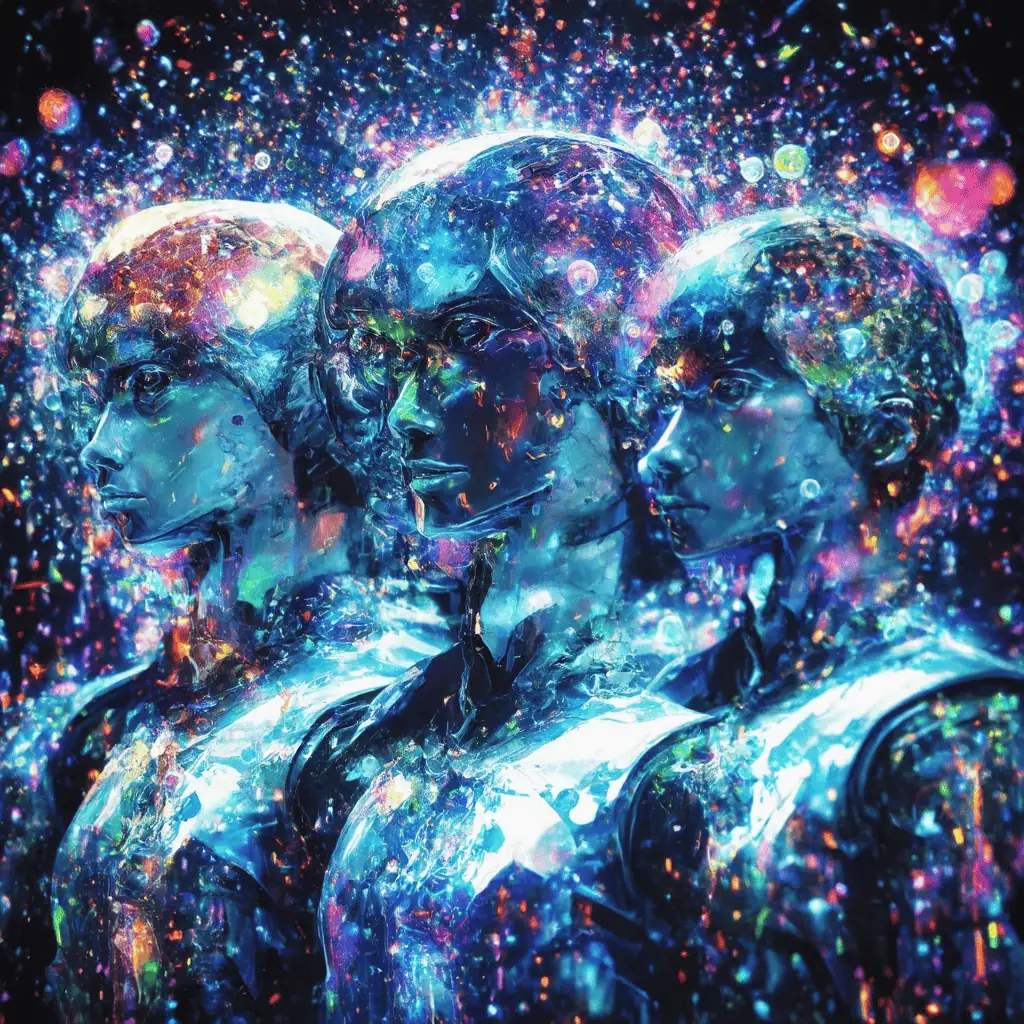
Comparing AI Chatbots to ChatGPT
At Messenger Bot, we’re constantly evaluating the AI landscape to ensure we provide our customers with the most advanced chatbot solutions. While ChatGPT has set a high bar in the AI conversation space, there are several impressive alternatives that offer unique features and capabilities.
Which AI is better than ChatGPT and Free?
While ChatGPT has garnered significant attention, several AI alternatives have emerged that offer compelling features, some of which are free to use. Here’s a rundown of top AI chatbots that compete with or even surpass ChatGPT in certain aspects:
1. Perplexity AI: This free AI excels in providing comprehensive, fact-based responses to open-ended queries. Its real-time web search integration ensures up-to-date information, making it particularly useful for current events and research tasks.
2. Claude (Anthropic): While not entirely free, Claude offers enhanced ethical reasoning and creative problem-solving capabilities. It supports longer context windows and maintains a consistent persona throughout conversations, which can be advantageous for complex, nuanced discussions.
3. Bard (Google): Leveraging Google’s vast knowledge graph, Bard provides real-time information and multimodal capabilities. Its integration with Google’s ecosystem makes it a powerful tool for information retrieval and analysis.
4. Bing Chat (Microsoft): This free option combines ChatGPT’s language model with Bing’s search engine, offering current information and image generation capabilities. It’s particularly useful for tasks that require visual content alongside text-based responses.
5. YouChat: This free AI focuses on personalized responses and learns from user interactions. It provides cited sources for factual claims, enhancing its credibility and usefulness for research purposes.
While these alternatives offer impressive capabilities, it’s important to note that the “best” AI often depends on the specific use case. At Messenger Bot, we’ve developed our AI to excel in customer service and engagement scenarios, providing a tailored solution for businesses looking to enhance their communication strategies.
Best open-source chatbot platforms for specific use cases
Open-source chatbot platforms offer flexibility and customization options that can be particularly valuable for businesses with specific requirements. Here are some of the best open-source chatbot platforms for various use cases:
1. Rasa: Ideal for businesses requiring high customization and control over their chatbot’s behavior. Rasa excels in natural language understanding and dialogue management, making it suitable for complex conversational flows.
2. Botpress: This platform stands out for its visual flow builder and built-in NLU engine. It’s particularly well-suited for businesses looking to create chatbots with minimal coding, while still maintaining the flexibility to add custom code when needed.
3. NLTK (Natural Language Toolkit): While not a chatbot platform per se, NLTK is an excellent choice for developers looking to build custom NLP solutions. It’s particularly useful for academic research and prototyping language processing applications.
4. Mycroft: This open-source voice assistant platform is perfect for businesses looking to integrate voice-controlled AI into their products or services. It’s particularly suitable for IoT and smart home applications.
5. OpenDialog: Designed for creating sophisticated conversational experiences, OpenDialog is excellent for businesses that need to handle complex, multi-turn conversations. It’s particularly useful in customer service and support scenarios.
6. Botpress: This open-source platform offers a robust framework for building conversational AI. It’s particularly well-suited for businesses that want to leverage AI capabilities while maintaining full control over their data and customization options.
At Messenger Bot, we understand that choosing the right chatbot solution is crucial for your business success. While open-source platforms offer flexibility, they often require significant development resources and ongoing maintenance. That’s why we’ve developed our AI-powered chatbot solution to provide the best of both worlds – advanced AI capabilities with the ease of use and support you need to succeed.
Our platform integrates seamlessly with popular messaging channels and offers powerful features like multilingual support, advanced analytics, and customizable conversation flows. By choosing Messenger Bot, you can harness the power of AI-driven customer engagement without the complexities of managing an open-source project.
Remember, the best chatbot solution is one that aligns with your specific business needs, technical capabilities, and long-term goals. Whether you opt for an open-source platform or a managed solution like ours, the key is to choose a tool that enhances your customer interactions and drives business growth.
The Evolution of AI Chatbots
At Messenger Bot, we’re constantly monitoring the AI chatbot landscape to ensure we provide cutting-edge solutions for our customers. The field of artificial intelligence chat bot open source technology has seen remarkable advancements, and we’re excited to share our insights on the current state of AI chatbots.
Is ChatGPT still the best AI?
While ChatGPT has undoubtedly set a high standard in the AI chatbot world, determining the “best” AI is complex and often depends on specific use cases. ChatGPT continues to excel in natural language processing and versatility, but the AI landscape is rapidly evolving with new contenders and specialized models emerging.
Here’s our perspective on ChatGPT’s current standing:
1. Natural Language Processing: ChatGPT remains a strong performer, but models like GPT-4 have raised the bar with enhanced capabilities.
2. Versatility: ChatGPT’s broad knowledge base makes it suitable for a wide range of applications, from creative writing to problem-solving.
3. User-Friendly Interface: The accessibility of ChatGPT has contributed significantly to its widespread adoption and popularity.
4. Ethical Considerations: OpenAI’s commitment to responsible AI development has positively influenced ChatGPT’s reputation.
However, it’s crucial to recognize that other AI models are making significant strides:
– Anthropic’s Claude has shown impressive capabilities in nuanced reasoning and extended context understanding.
– Google’s PaLM and LaMDA models are pushing boundaries in conversational AI and knowledge retrieval.
– Specialized AIs like Midjourney and DALL-E 2 are revolutionizing image generation and multimodal AI interactions.
At Messenger Bot, we believe that the “best” AI depends on your specific needs. While ChatGPT excels in general-purpose tasks, our platform is tailored for business-specific applications, offering advanced features like multilingual support and seamless integration with popular messaging platforms.
Advancements in artificial intelligence chat bot open source technology
The open source chatbot community has been instrumental in driving innovation in AI chatbot technology. Here are some key advancements we’ve observed:
1. Enhanced Natural Language Understanding (NLU): Open source frameworks like Rasa and Botpress have made significant strides in improving NLU capabilities, allowing chatbots to better understand context and user intent.
2. Multilingual Support: Many open source chatbot platforms now offer robust multilingual capabilities, enabling businesses to serve a global audience more effectively.
3. Integration of Large Language Models: Open source projects are increasingly incorporating or providing interfaces to large language models, bringing advanced conversational abilities to a wider range of applications.
4. Improved Dialogue Management: Advancements in dialogue management systems allow for more natural, context-aware conversations, reducing the frustration often associated with earlier chatbot interactions.
5. Customization and Flexibility: Open source platforms are offering more tools for customization, allowing developers to tailor chatbots to specific business needs without starting from scratch.
6. Voice Integration: Many open source chatbot frameworks now support voice interfaces, expanding the potential applications for AI chatbots.
7. Emotion Detection: Some advanced open source projects are incorporating emotion detection capabilities, allowing chatbots to respond more appropriately to user sentiment.
At Messenger Bot, we’re inspired by these advancements in open source technology. While we offer a proprietary solution, we continuously incorporate learnings from the open source community to enhance our AI-powered features. Our platform combines the best of both worlds – the innovation driven by open source developments with the reliability and support of a managed solution.
We believe that the future of AI chatbots lies in the synergy between open source innovation and specialized, industry-specific solutions. As we continue to evolve our platform, we’re committed to staying at the forefront of these technological advancements, ensuring that our customers always have access to the most effective and cutting-edge chatbot solutions.
For businesses looking to leverage the power of AI chatbots, it’s crucial to choose a solution that not only incorporates the latest advancements but also aligns with your specific needs and goals. Whether you opt for an open source solution or a managed platform like ours, the key is to select a chatbot that can effectively enhance your customer interactions and drive business growth.
Implementing Open Source Chatbots
At Messenger Bot, we understand the importance of leveraging open source technologies to create powerful chatbot solutions. While we offer a comprehensive proprietary platform, we recognize the value that open source chatbot software brings to the table. Let’s explore some key resources and frameworks in the open source chatbot ecosystem.
Chatbot software open source GitHub resources
GitHub is a treasure trove of open source chatbot projects, offering developers a wide range of tools and frameworks to build sophisticated conversational AI solutions. Here are some notable GitHub repositories that we’ve found particularly useful:
1. Rasa: Rasa is one of the most popular open source machine learning frameworks for automated text and voice-based conversations. It’s highly customizable and allows developers to create contextual assistants.
2. Botpress: Botpress is an open source conversational AI platform that enables developers to build, run, and improve chatbots. It offers a visual flow editor and built-in NLU capabilities.
3. Hugging Face Transformers: The Transformers library by Hugging Face provides thousands of pre-trained models for natural language processing tasks, including chatbot development.
4. ChatterBot: ChatterBot is a Python library that makes it easy to generate automated responses to user inputs. It uses a selection of machine learning algorithms to produce different types of responses.
5. Leon: Leon is an open source personal assistant that can run on your own server, ensuring privacy and customization.
These GitHub resources offer a solid foundation for developers looking to create custom chatbot solutions. However, it’s important to note that while these open source options provide flexibility, they often require significant technical expertise to implement and maintain effectively.
At Messenger Bot, we’ve drawn inspiration from these open source projects to enhance our own AI-powered features. Our platform combines the innovation of open source with the reliability and ease of use of a managed solution, allowing businesses to quickly deploy sophisticated chatbots without the need for extensive coding knowledge.
Botpress and other popular open source chatbot frameworks
While Botpress is a standout in the open source chatbot community, several other frameworks deserve attention for their unique features and capabilities:
1. Botpress: As mentioned earlier, Botpress offers a visual flow editor and built-in NLU. It’s particularly well-suited for businesses looking to create complex conversational flows without extensive coding.
2. RASA: RASA stands out for its machine learning-based approach to intent recognition and dialogue management. It’s highly customizable and supports multiple languages, making it ideal for multilingual chatbot development.
3. Dialogflow: While not entirely open source, Dialogflow by Google offers a free tier and integrates well with other open source tools. It’s known for its ease of use and powerful natural language processing capabilities.
4. OpenDialog: This framework focuses on creating sophisticated, context-aware conversational experiences. It’s particularly useful for businesses looking to implement complex decision trees in their chatbots.
5. BotKit: Now part of Microsoft, BotKit provides a set of tools for building chat bots, apps, and custom integrations for major messaging platforms.
Each of these frameworks has its strengths, and the choice often depends on specific project requirements. For instance, if you’re looking to create a multilingual chatbot with complex conversational flows, RASA might be your best bet. On the other hand, if you prioritize ease of use and visual design, Botpress could be the way to go.
At Messenger Bot, we’ve studied these frameworks extensively to inform our own development. While we offer a proprietary solution, our platform incorporates many of the best features found in these open source frameworks. We’ve designed our chatbot creation process to be intuitive and powerful, allowing businesses to leverage advanced AI capabilities without the need for deep technical knowledge.
Implementing an open source chatbot can be a rewarding experience, offering full control over the development process and the ability to customize every aspect of your bot. However, it’s important to consider the resources required for development, maintenance, and hosting. For many businesses, a managed solution like Messenger Bot offers the best of both worlds – advanced AI capabilities inspired by open source innovations, combined with the ease of use and reliability of a fully supported platform.
Whether you choose to dive into open source development or opt for a managed solution, the key is to select a chatbot framework that aligns with your business goals and technical capabilities. As the field of conversational AI continues to evolve, we at Messenger Bot remain committed to incorporating the latest advancements into our platform, ensuring that our customers always have access to cutting-edge chatbot technology.
